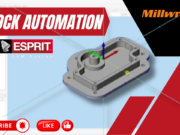Introduction
Cam profiles are essential in mechanical engineering and machinery design, providing precision in converting rotary motion into linear motion. This article explores what cam profiles are, their types, and their diverse applications across various industries.
What is a Cam Profile?
A cam profile is a component in cam mechanisms that converts the rotational motion of a camshaft into specific follower or actuator movements. The cam profile shape dictates the timing and extent of these movements.
Types of Cam Profiles
1. Circular Cam Profile:
- Simple and circular, providing uniform follower motion.
- Ideal for constant velocity or simple indexing applications.
2. Heart Cam Profile:
- Heart-shaped for varied follower displacement.
- Suitable for non-linear motion or varying speeds.
3. Pear Cam Profile:
- Pear-shaped with slow-rise and fast-drop movements.
- Used in applications requiring rapid return motions, like stamping machines.
4. Snail Cam Profile:
- Also known as helical or cylindrical cam, converting rotary to precise linear motion.
- Common in fuel injection pumps and printing machinery.
5. Oval Cam Profile:
- Oval-shaped for rapid rise and gradual fall movements.
- Applied in packaging machinery for accurate material handling.
Applications of Cam Profiles
Automotive Industry:
- Controls valve timing and duration in internal combustion engines.
Manufacturing:
- Utilized in shaping, cutting, and forming machinery for precise tool or workpiece movement.
Robotics:
- Ensures reliable motion sequences in robotic arms and automated systems.
Packaging Machinery:
- Provides precise control over packaging material movements, ensuring accurate filling and sealing.
Textile Industry:
- Controls shuttle movement and pattern in weaving machines.
Medical Devices:
- Used in surgical tools and other medical instruments for precise control over movements.
Creating a cam profile in Mastercam involves several steps. Here’s a generalized approach you can follow:
Step 1: Import Coordinate Points
1. Prepare your coordinate points: Ensure you have the X, Y (and possibly Z) coordinates of points that define your cam profile. These points should ideally be in a text file or a format that Mastercam can import.
2. Import into Mastercam:
– Start Mastercam.
– Open a new or existing project where you want to create the cam profile.
– Use the appropriate import feature in Mastercam to bring in your coordinate points. This can typically be done through the File > Open or File > Import options, depending on the file format.
Step 2: Create Geometry in Mastercam
1. Convert points to geometry:
– Once your points are imported, you need to convert them into usable geometry within Mastercam.
– Depending on your points and the type of cam profile you are creating, this could involve using the Points-to-Line command or other relevant geometry creation tools in Mastercam.
Step 3: Generate the Cam Profile
1. Use Mastercam’s CAD tools:
– Mastercam provides a range of CAD tools for creating complex shapes. For a cam profile, you might use functions like:
– Lines and Arcs: If your cam profile can be approximated with straight lines and arcs, use these tools to draw the profile based on the imported coordinates.
– Spline Curves: For more complex curves, consider using splines to smoothly connect the points.
– Trim and Extend: Use these tools to refine your geometry and ensure it accurately represents the desired cam profile.
Step 4: Verify and Adjust
1. Check the profile:
– Once you have created the initial geometry, verify that it matches your imported coordinate points and represents the correct cam profile shape.
2. Make adjustments:
– Fine-tune the geometry as necessary using Mastercam’s editing tools. This might involve adjusting endpoints of lines, adjusting arc radii, or refining spline curves.
Step 5: Save and Use
1. Save your work:
– Save your Mastercam project to preserve your cam profile geometry for future use.
2. Export or integrate:
– Depending on your workflow, you may need to export the cam profile geometry for use in other software or for machining purposes.
Video reference
Conclusion
Cam profiles are vital in mechanical engineering for precise motion control across various applications. Understanding their types and uses is crucial for designing efficient mechanical systems in automotive, manufacturing, robotics, packaging, textile, and medical industries. Cam profiles ensure operational efficiency and reliability in achieving desired mechanical movements.
















